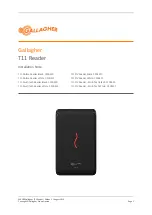
402-00005-00
Theory of Operation
2–34
Rev 02; February 8, 2002
automatically changed to compensate for the field shift. The mother board acquires the image in the correct field
order.
2.7.7 External Trigger and Strobe
The PCVisionplus can acquire images based on an external event (external trigger input signal) and it can output a
synchronous strobe signal coincident with the trigger cycle. The PCVisionplus also supports a synchronous strobe
and asynchronous frame reset outputs.
The external trigger input is a programmable edge trigger input with minimum pulse width of 250 ns. The selected
edge of an external trigger input causes the frame memory to acquire a single frame at the next vertical blank. A
software trigger is also provided allowing the user to simulate a trigger cycle through software. The trigger input can
reset the PTG and PWG to synchronize them to the incoming video. A strobe output occurs at the next vertical blank
(in slow mode) or the strobe can be programmed to occur coincident with the trigger input (in fast mode). An external
frame reset pulse based on an external trigger input can be programmed and driven to a camera.
The INCON1 register controls triggered acquisition. The TRIGEN bit enables trigger mode. The TRGISEL bits se-
lect external input or software trigger. The TRIGPOL bit selects the rising or falling edge of the incoming external
trigger pulse. The correct trigger event (software or external signal) causes the next frame of video to be acquired.
The TRIGCYC and TRIGEN bits can be monitored to see the status of the trigger acquire cycle. A strobe pulse is
output synchronous to the acquired frame on three pins of the video connector. The polarity of the output strobe pulse
is programmable. The PCVisionplus has several different modes of trigger and strobe operation: Trigger on Frame-
Slow Strobe, Trigger on Frame-Fast Strobe, and Frame Reset Mode. The strobe mode is selected by the STRBMD
bits.
2.7.7.1 Using Strobe Lights
When using strobe lights with cameras, executing a strobe illuminates the field(s) of video after the flash of light.
Once Vsync occurs, you have missed the opportunity to illuminate and acquire the next full field of video and incur a
one field delay in acquire. Cameras have a region immediately after Vsync where a strobe will not give the desired
result. This no strobe region is when the camera is transferring the previous field from the camera. The following
figures show scenarios with the strobe light firing at different positions. Both figures assume that fast strobe mode is
selected.
Artisan Technology Group - Quality Instrumentation ... Guaranteed | (888) 88-SOURCE | www.artisantg.com
















































